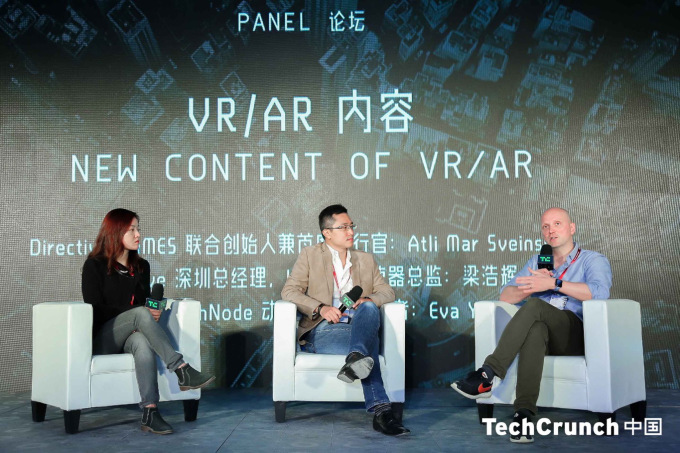
The narrative around China’s visual entertainment industries tends to focus on quantity. More than 600 films are made in China each year, not far short of the US. The market will soon boast more screens than America, and generate bigger box office revenues. Meanwhile, China has the world’s largest games market and the most virtual reality arcades.
The quality of Chinese content is rarely talked about with the same enthusiasm, not least in terms of graphics, effects, and animation. Certainly compared to the output from cutting-edge effects companies in London, Vancouver, and Wellington, Chinese visual imaging is playing catch-up.
That is understandable given that China has been making CG-heavy films for less than a decade. MORE VFX Chief Technical Officer, Yongmeng Wang, speaking late last year at Beijing entertainment conference ICEVE, explained that experience was key. “Realistic creatures and big environmental effects have been rare in Chinese films,” he said, “We’ve had few opportunities to address those kinds of challenges”.
Secondly, Wang adds, “We have begun to realize that research and development is of major significance to visual effects companies. World-class companies have concentrated on R&D for years and accumulated a wealth of knowledge.”
Indeed, expert technology teams at companies like Framestore, MPC and Weta will routinely modify off-the-shelf software or develop entirely new tools in areas like rendering, rigging, and performance-capture, often scooping Technical Achievement Academy Awards for their efforts. Hollywood’s R&D model harks back to 1979 when George Lucas wondered if advancements in computer graphics could make scenes more spectacular for the next Star Wars films. To find out, he founded effects company Industrial Light & Magic and hired a group of computer scientists from the New York Institute of Technology, who went on to develop groundbreaking rendering technology, particle effects and animation tools. The team broke away in 1986 and with investment from Steve Jobs, formed another tech-led production company, Pixar.
Today in China, by contrast, the booming movie market, hype around virtual reality and government financial incentives to produce animated content, has fostered a short-term mindset, where investment decisions are often profit- rather than creatively driven.
Disney veteran Kevin Geiger, former director of the Beijing Film Academy’s International Animation & Virtual Reality Research Center, explained, “Many Chinese investors are unrealistic in terms of the simple mathematics of how long it takes to get a return. Take the time of development, production, post and the approval process – then add the distribution – and you’re talking about a year or two at least before you can see any kind of revenue, let alone profit. A VR startup is often required to undercut the more innovative things it is attempting, and come out with a dumbed-down, scaled-down version.”
Domestic movie VFX studios rarely have the time or financial resources to devote to R&D, while cost and communication barriers tend to prevent productions from employing the expertise of international companies.
China also lacks homegrown hardware and software. Film and VR director Zhigang Wang, in an interview at the Beijing Film Academy, explained, “Every software we use, be it for image processing or creation, is not developed by Chinese…we may carry out some innovations at the application level, but nothing original.”
Domestic content creators mostly utilize tools from foreign companies like AMD and Foundry and open-source development software like Google VR SDK and Facebook Pyramid. Chinese tech companies like HiSense and Sight+ have produced software development kits (SDKs) for augmented reality (AR) but the medium is too new for any one software to take hold across the board. Consequently, Alibaba expert Jiayi Jiang says the Chinese SDKs “are bound to be replaced.”
To some degree, the BAT (Baidu, Alibaba, Tencent) giants can march to their own beat when it comes to R&D. They each boast well-funded research labs and the financial clout to attract the best scientists, acquire software startups, license prototype research or incubate projects.
As is well reported, the triumvirate’s major focus is on Artificial Intelligence. Baidu Research 3D Vision scientist, Ruigang Yang, said at ICEVE that the company is adopting an “ABC” strategy: Algorithm, Big data, and Computing, “The aspiration of A.I. is to translate all pictures, video, voice and other data into knowledge.”
BAT possesses a wealth of user data from their VOD platforms (iQiyi, Youku, Tencent Video) and online search (Baidu), shopping (Taobao) and social media platforms (WeChat). The knowledge it gleans from that data is likely to be used for cold, market-driven development decisions, rather than creative risk-taking. Algorithms will instruct which types of show most satisfy audience tastes and are thus most lucrative to produce. In the development stage, projects may employ similar algorithms to those used by startups like Vault and ScriptBook, which they say can predict a film’s box office success simply by analyzing the screenplay. Once released, they can push the content directly to their target viewers via personalized recommendations.
Baidu, Alibaba, and Tencent have started developing film and VR content, but leave R&D to the international creative companies, like Digital Domain, to whom they outsource the production. Their in-house research into tools for content creation currently focuses on AR. If AR apps become as popular as they hope, Jiang predicts, “there will be massive demand for 3D content. Those who can provide it quickly and at a low cost will have a good chance to succeed.”
That will open the door for purveyors of rapid prototyping and real-time technologies such as 3D scanning, GPU rendering, mocap and facial recognition, although whether China’s perennial demand for speed will always come at the expense of image quality, remains to be seen.
If there is hope, it is with high-end production companies like Plex VR, which utilizes light field acquisition technology to create ultra-realistic assets. Its unique “Light Field Dome”, a 360° rig of 140 cameras, captures both 3D geometry and appearance of people and objects at extremely high resolutions.
The Dome is housed in the Virtual Reality & Visual Computing (VRVC) center, a lab within ShanghaiTech, a new research university established by the Shanghai Municipality and the Chinese Academy of Sciences. VRVC director and Plex founder Jingyi Yu has been researching light field technology in the US for nearly 20 years. Plex has already worked with Alibaba for Taobao Singles Day in 2106 and, Yu hopes, once word gets out, the Dome will “stimulate significant future work on producing top quality movie special effects”.
Tech vs. Creative Driven
The Chinese government identified innovation as a key focus in its 13th five-year plan in 2016, decreeing that R&D spending should grow to 2.5% of GDP. Aiming to nurture more long-term research free from commercial pressures, in 2016 it launched 21 innovation centers in partnership with various Chinese universities, in disciplines ranging from Intelligent Robots to Chip Technology to Food Nutrition & Human Health.
Among them is the Advanced Innovation Centre for Future Visual Entertainment (AICFVE), an $8m a year, multifunctional lab and knowledge hub housed at China historic filmmaking home, the Beijing Film Academy (BFA).
The AICFVE faces challenges on many fronts if it is to fulfill its mission to elevate traditional and emerging visual media production.
Visual effects pioneer Scott Ross, in an interview at ICEVE, raised perhaps the most pertinent question of all. “My fear is that…the Chinese community is much more enamored with the concept of technology than they are with intellectual property, creativity, and art” he said. “It’s really cool that you have 16K resolution and no latency, but what are you saying? What’s the story? Why are we doing this?”
Ross managed Academy Award-winning visual effects studios before, during and after the transition from analog to digital. “If we continue to just look at technology as leading the effort,” he said, “we’re missing the point.”
Above all, if China is to create homegrown visual entertainment on par with the world’s best, it will need to place greater value on nurturing young writers, directors and content creators, and let their vision inform the work of the labs. In tandem, the country’s historically fragmented education, research and production communities will need to develop a more symbiotic relationship, to better understand and address each other’s needs.
To some extent, better quality will evolve naturally as producers gain more experience and audiences become more demanding, but China cannot rely on the market to lead. It is up to commercially unencumbered groups like the AICFVE to be custodians of the process.
–This article originally appeared on TechNode.











